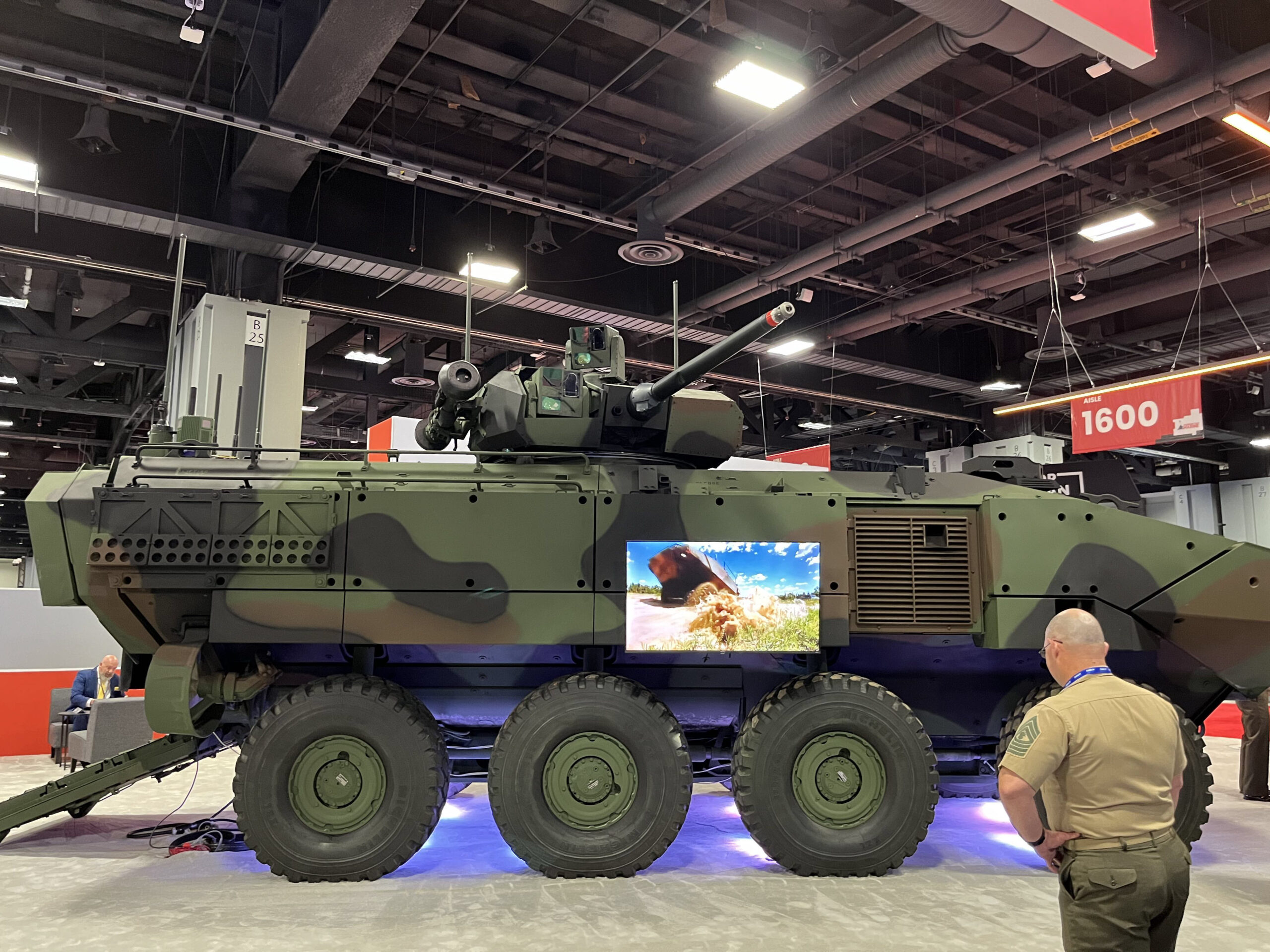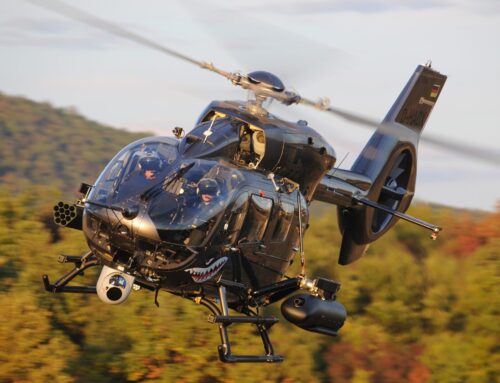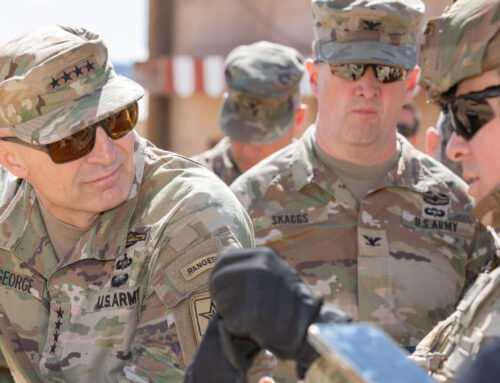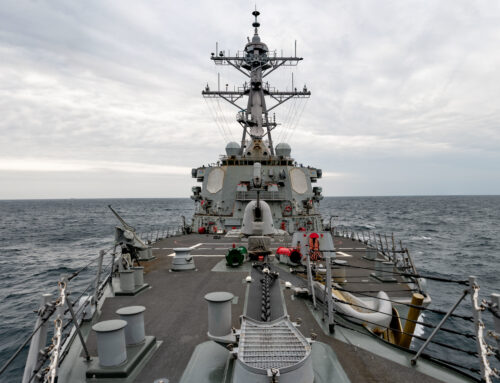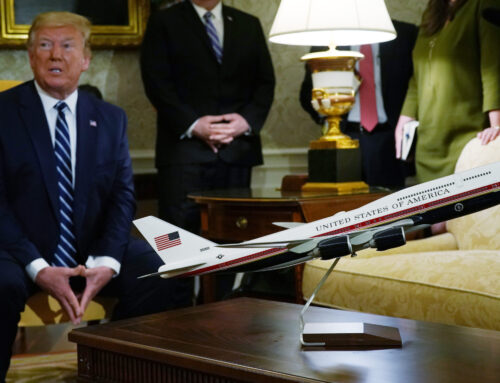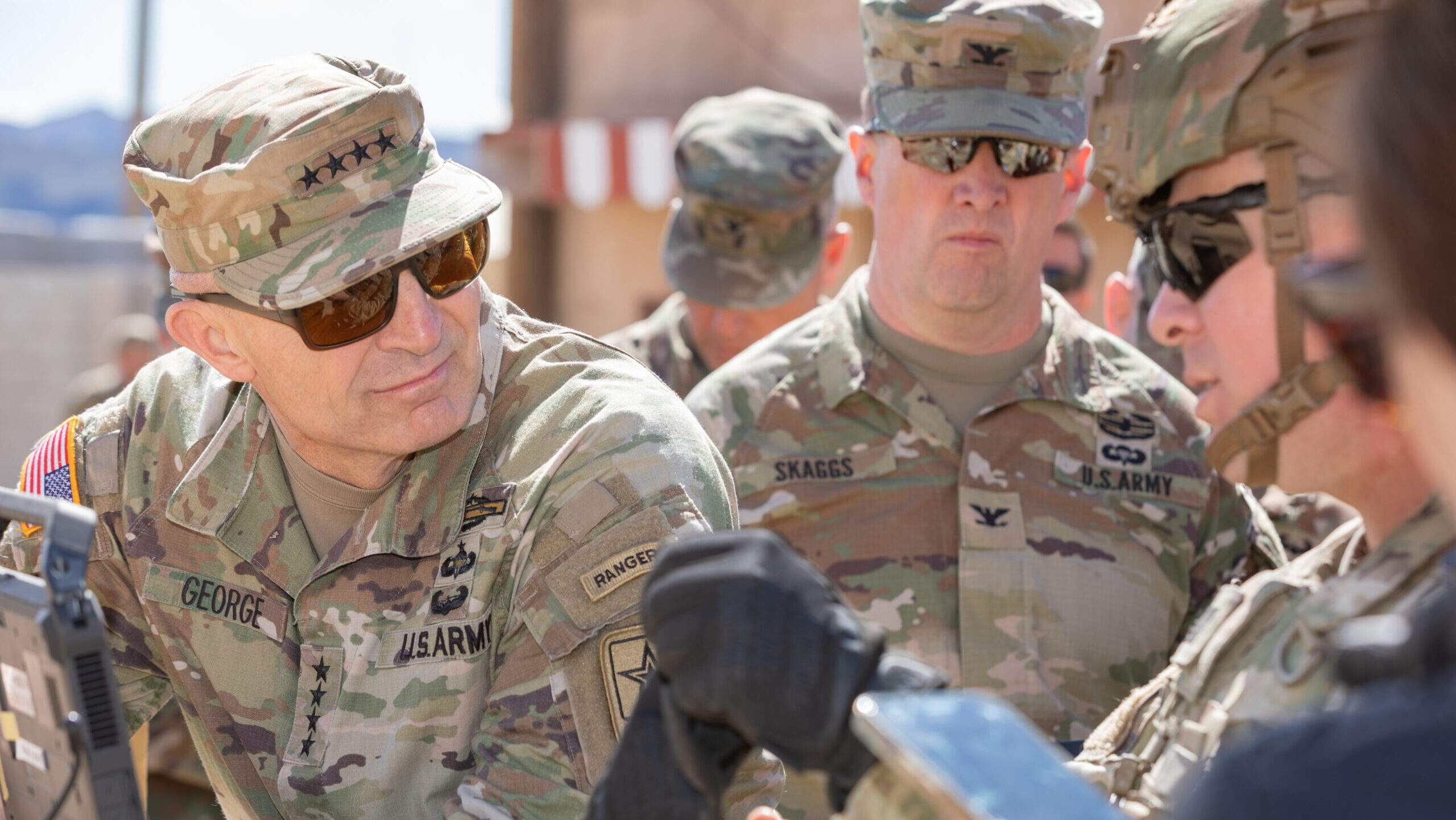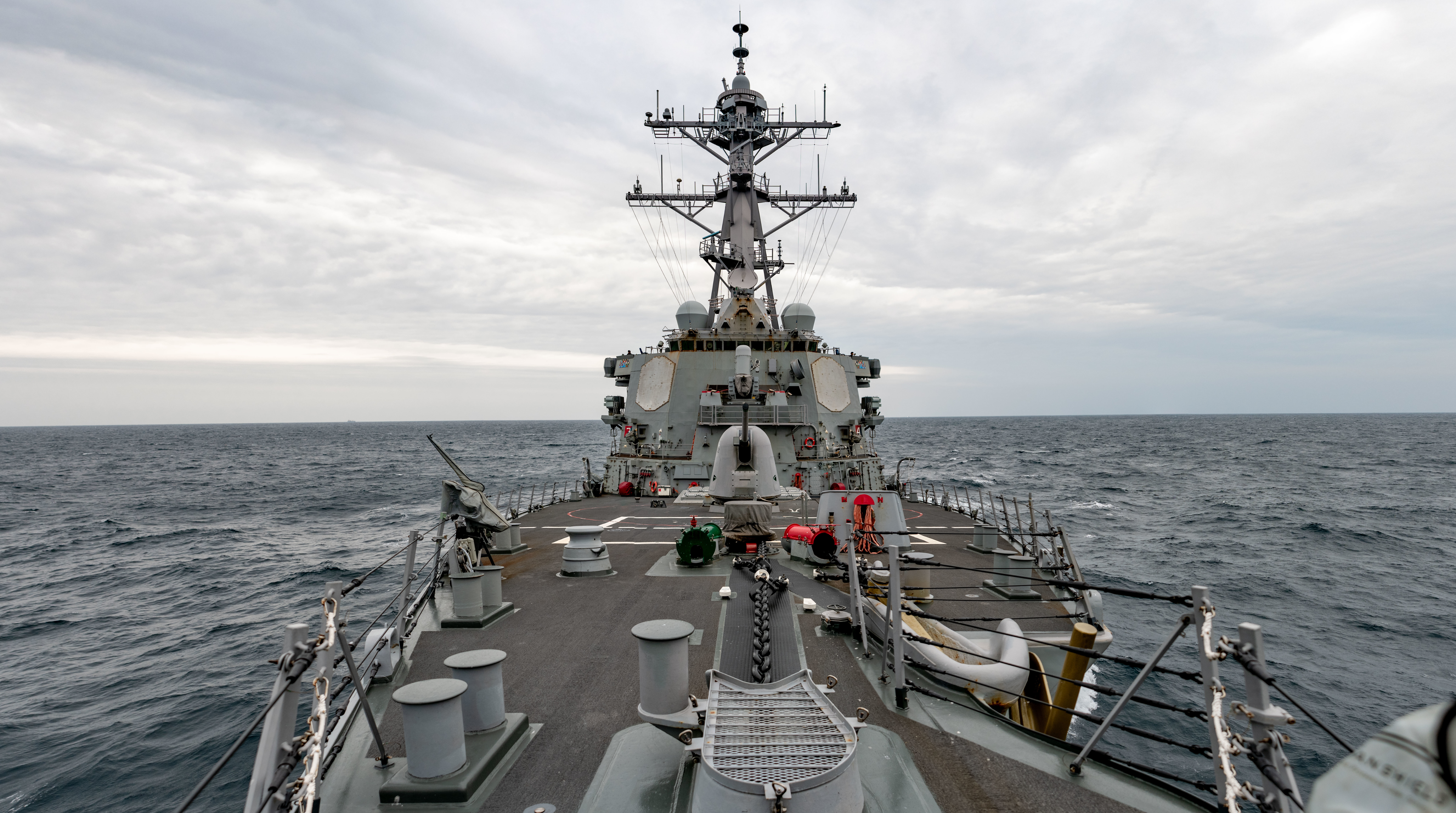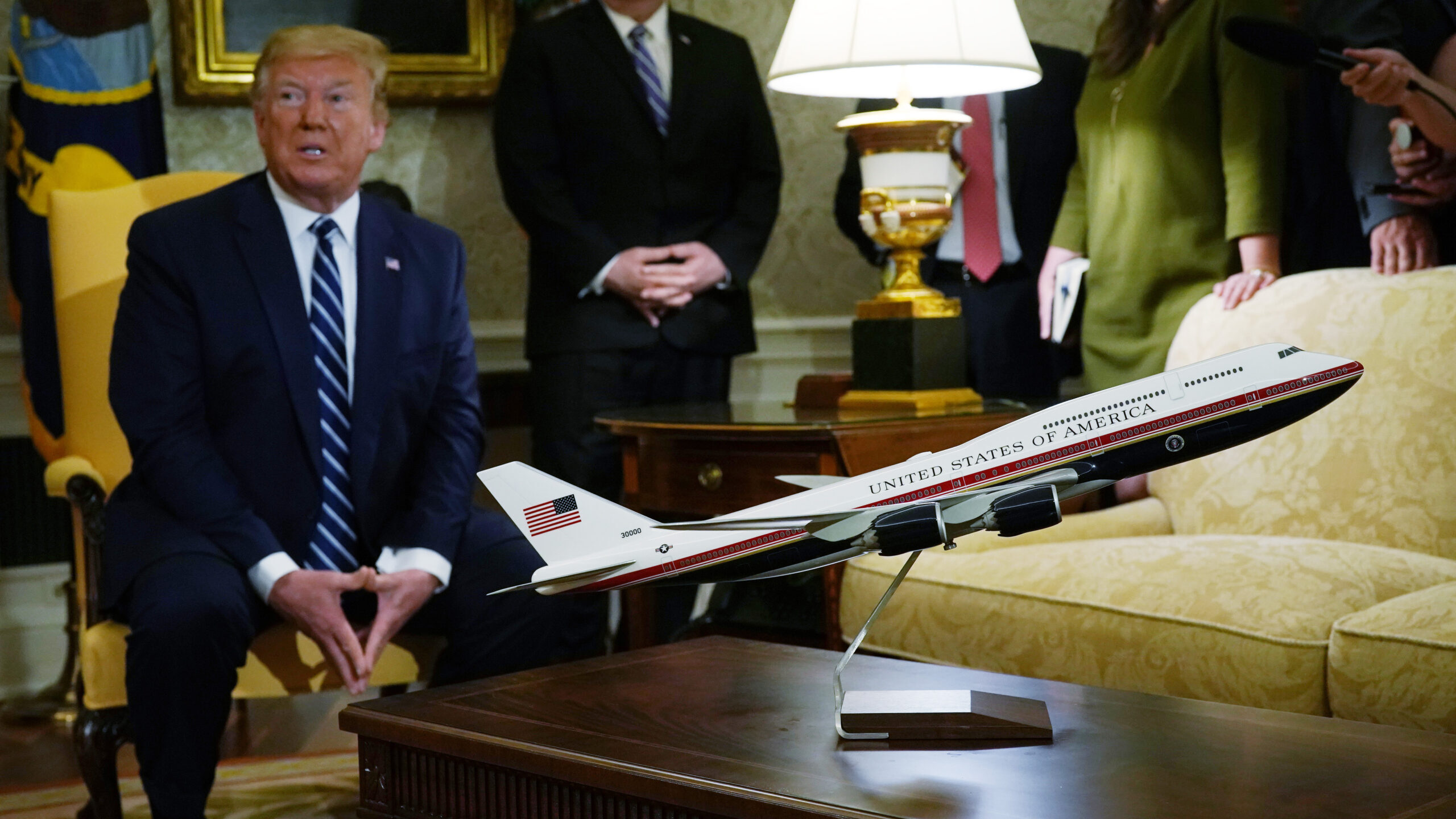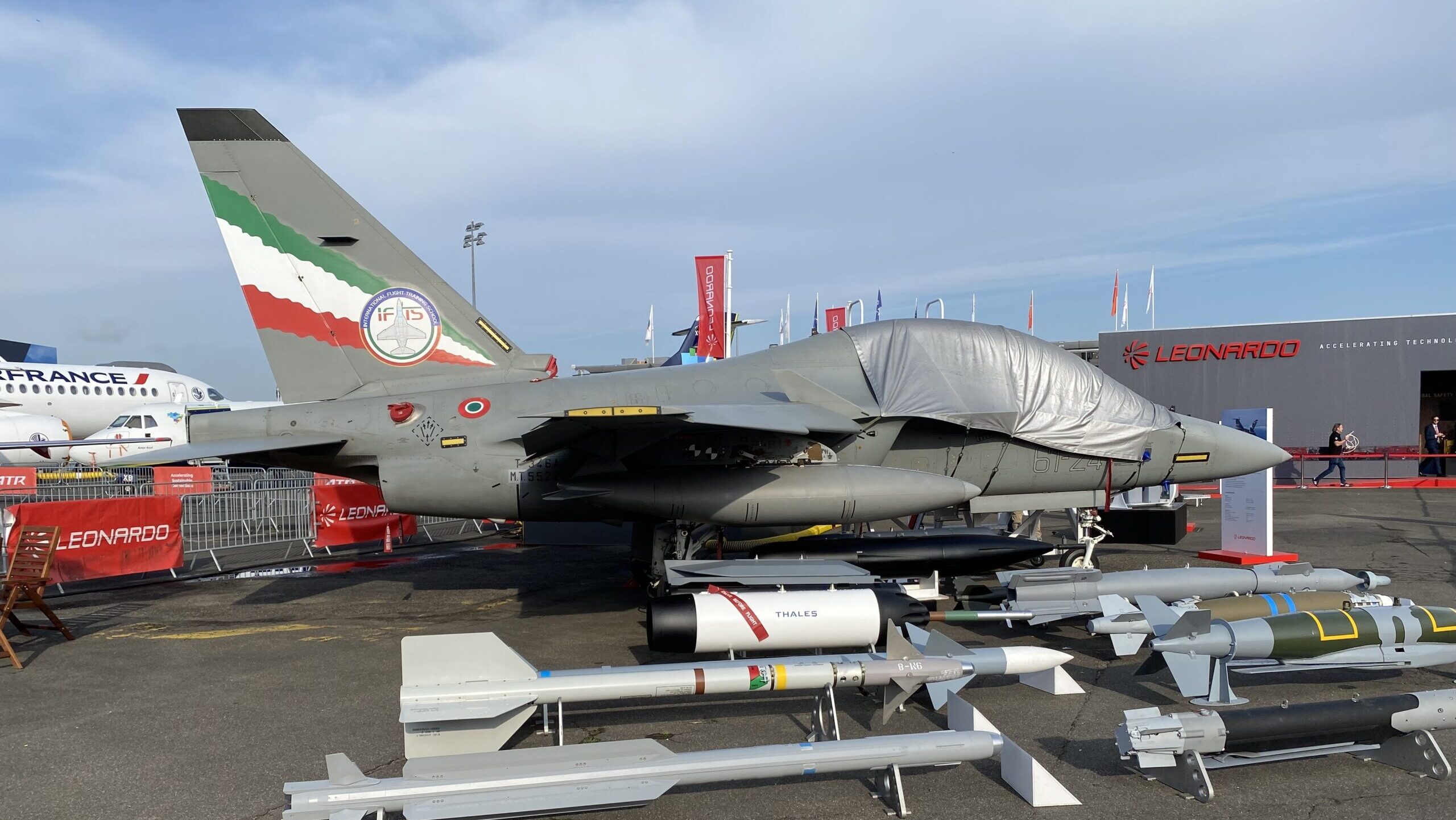Thales’ Catherine thermal image sensor is seen on the gun turret of the Amphibious Combat Vehicle, ACV-30, to provide advanced threat detection and imaging for the weapons station and crew. (Thales photo)
The threat environment for ground vehicle platforms has evolved significantly. Maneuver formations now face a multifaceted threat that includes both kinetic force-on-force and unmanned systems threats and non-kinetic effects such as active electronic warfare, or a combination of both. EW is a particular challenge, not only being able to detect and react to threats but also being able to understand and mitigate the formation’s own EW signature in order to be less visible to the enemy.
These combined threats are being mitigated with a three-fold operations construct that provides a comprehensive understanding of the battlefield, an ability to detect threats, and capability to deny or degrade those threats. Together they give maneuver forces a means to understand what’s going on around the formation and each individual platform.
Situational awareness in those scenarios come about through three enabling buckets of technology:
Sensor integration of thermal imagers, cameras, and acoustic detection systems onto vehicle platforms to provide enhanced situational awareness for crews operating under armor.
Networked systems that enable data sharing and coordination across the formation through robust networking and interoperability standards such as C5ISR/EW Modular Open Suite of Standards (CMOSS) and VICTORY.
Power management through intelligent power distribution and control systems to support the increased sensor and processing loads, reduction in signature, and silent watch capabilities.
The specific threat and capability requirements may vary across Areas of Responsibility such as U.S. Central Command or European Command, but the core principles of situational awareness, threat detection, and counter-measure capabilities remain critical for ensuring vehicle and crew survivability.
“We now must assume we are always operating in contested environments,” said Erik Balascik, director of business development for ground vehicles, Thales Defense & Security, Inc. (TDSI). “If you’re an armored platform commander you are now operating in a closed environment, inside your vehicle.
“Now, given the threats and technology for crew and vehicle survivability, crews operate closed hatch. They are physically inside the vehicle either in the turret or hull of the vehicle, and they must rely on external sensors for situational awareness.”
Sensors for closed-hatch operations
The most important sensor types for vehicle survivability include infrared sensors for vision, acoustic sensors for shot protection, and thermal imagers for targeting.
HD Minerva is Thales’s latest uncooled thermal imaging sensor, which is the outside eyes for driver vision enhancement (DVE) and local situational awareness (LSA) as the vehicle crew conducts under-armor maneuvers.
Thales’s Minerva HD uncooled thermal imaging sensor is the ‘outside eyes’ of the vehicle crew as they conduct under armor operations, and its 1280×1024 HD detector provides 2x more pixels than previous VGA sensors (Thales photo)
Designed and manufactured by Thales in Canada, home to Thales’ global center of excellence for uncooled technologies, Minerva integrates uncooled Long Wave Infrared (LWIR) HD 1280×1024, 12-micron detector – a rarity in uncooled devices – and a full HD 1920×1080 visible module. Minerva’s sensor outputs fully digital 60 Hz video (3G-SDI), and its low-latency and automatic image processing algorithms ensure users experience no delays in optimizing situational awareness without needing to make adjustments. That means users can trust the live images to give them the information they need to act fast, feel safe, and gain a crucial tactical advantage.
“Our camera provides twice the pixels than the previous sensors, and the crews will immediately see the difference based upon what they had in the past,” said Balascik. “You can see farther and even better than you would see standing outside a vehicle with your own eyes. It’s a completely different way to experience the world around you to understand what your vehicle and the vehicles in the formation are doing.”
If HD Minerva is the eyes of an enhanced DVE/LSA system, then gunshot protection through a Thales system called Acusonic is the ears.
Acusonic gunshot detection overcomes an established weakness in other shot-detection systems. Rather than relying solely upon picking up muzzle blast to provide accurate bearings alone – the Achilles Heal of other systems due to false alarms – Acusonic also utilizes the projectile’s supersonic shock wave and wake signature to augment the weapon muzzle blast to provide detection and threat location capabilities in diverse battlespace.
Thales Acusonic for robotic applications transforms the system into a multi-functional sensor by providing a telepresence capability to the robotic vehicle operator. (Thales photo)
“That’s what sets us apart from prior systems,” said Balascik, noting that Acusonic was selected for both the British Army’s Ajax armored fighting vehicle and Boxer mechanized infantry vehicle programs. “It is being evaluated on multiple prototypes in the United States, and the reason that we’re getting that acceptance is because the system’s not constantly giving you false alarms. It is actually a force multiplier instead of the hindrance for the operation.”
It has also shown it can provide accurate bearings to firing positions from moving platforms not just on land but also on the water for special forces operating in littoral or riverine environments where hostile firing positions may be concealed, for example.
Interestingly enough, the collection of signals from Acusonic can also play an important role in ground robotics on platforms like the XM30 Mechanized Infantry Combat Vehicle to provide what’s called “telepresence.” Most robotic vehicles only provide visual sensing, but one equipped with Acusonic would let the operator not only see what the robot is seeing but actually hear what it picks up to get an even better understanding of the surroundings.
The third key category of sensor for vehicle survivability is thermal imaging and laser range finding for targeting. Thales has a broad portfolio when it comes to targeting, including a cooled thermal imager called SharpView that the U.S. Marine Corps has integrated onto its Marine Air Defense Integrated System (MADIS) air-defense vehicle, and a system called Panoramic Above Armor Gimbal (PAAG).
PAAG is a stabilized 360-degree electronic surveillance and sighting system in a compact package that gives vehicle commanders and crews a wide range of capabilities through a combination of sensors. They include a cooled thermal imager and high-resolution daylight color camera, both with continuous zoom, along with a laser rangefinder and laser target designator. Together they give crews long-range threat detection and identification, weapon aiming and fire support capabilities, day and night, in all weather conditions. Everything is remotely controlled from inside the vehicle to keep crews protected at all times.
“Whether it is for air defense systems like MADIS or new vehicles like the Marine Corps’ Advanced Reconnaissance Vehicle, our camera system provides those vehicle crews with the next generation of thermal imagers,” said Balascik. “It’s critical because the military is up-gunning to 30mm, Medium Caliber Weapon System turrets. That means you need additional distance from your thermal imagers so you can see to the same maximum effective range of that weapon system.”
Power management and standards for SA
In space-constrained vehicles, integration of these systems presents its own particular challenge. For example, the vehicle systems themselves need to have certain smart capabilities like intra-vehicle network management and especially energy management.
“We can make decisions with our vehicles today that are more capable than our vehicles from years past, but they still roll from point A to point B and have a finite amount of power to drive these vehicles and also power the systems that are inside,” said Patrick Allison, director of DoD business development for TDSI. “You can’t go to the battlefield without power. It’s absolutely necessary. And how you manage power can make or break your battle plan.”
Thales has a family of power management systems that not only distribute power, they channel the right amount of power to various systems across the vehicle, which can also help mitigate vehicle signature management. The power loads are smartly managed to let operators take power from one area and reserve it for another when necessary. That’s especially valuable at night and during obscure operations so crews can have a silent-watch capability where systems are running without the vehicle being turned on.
Finally, compliance to standards like CMOSS and VICTORY are critical enabling technologies that allow new capabilities to be integrated onto vehicles by the government and OEMs as threats and requirements evolve.
“In the Command, Control, Communications, Computers and Intelligence (C4I) arena, vehicles introduced post-2030 will have a requirement written around CMOSS and CMFF compliance,” noted Allison. “That will let the Army upgrade or add systems to these platforms all based on open standards and architecture with interfaces that permit systems to be swapped between platforms. Thales is working the C4I aspect of CMOSS and bringing in capability for both voice and data on the battlefield.”


